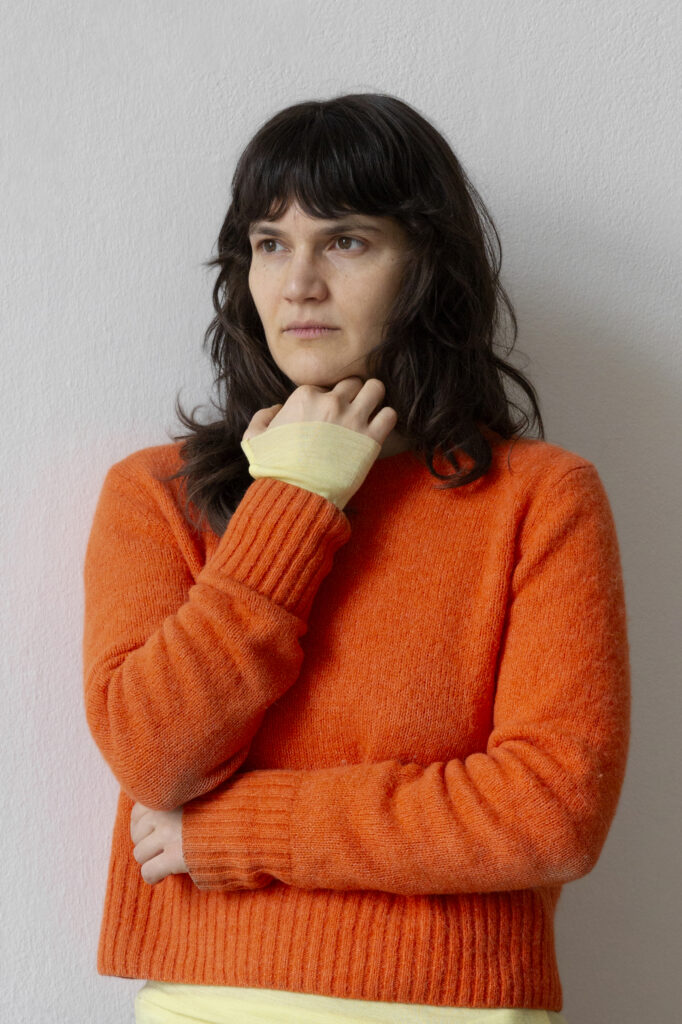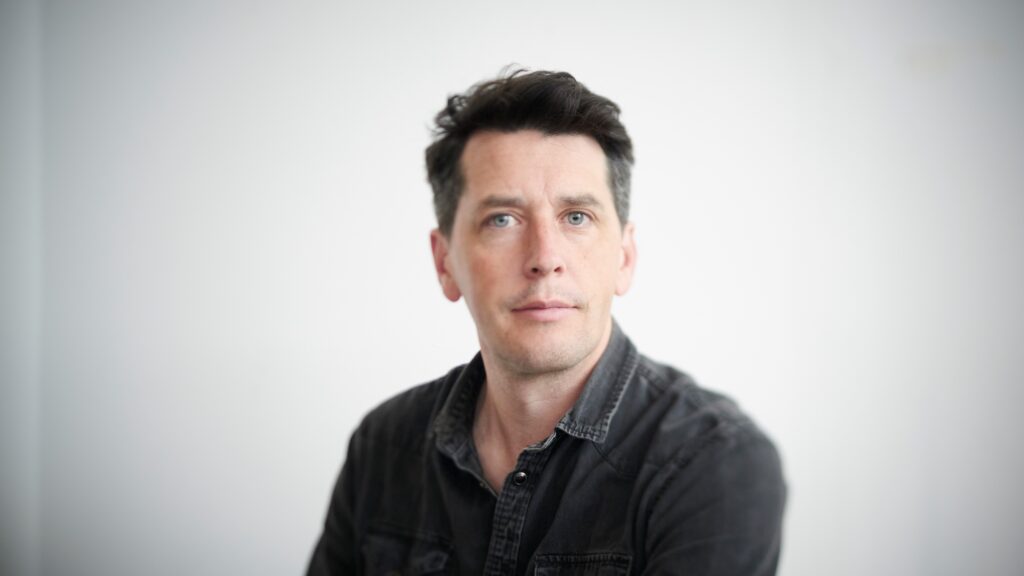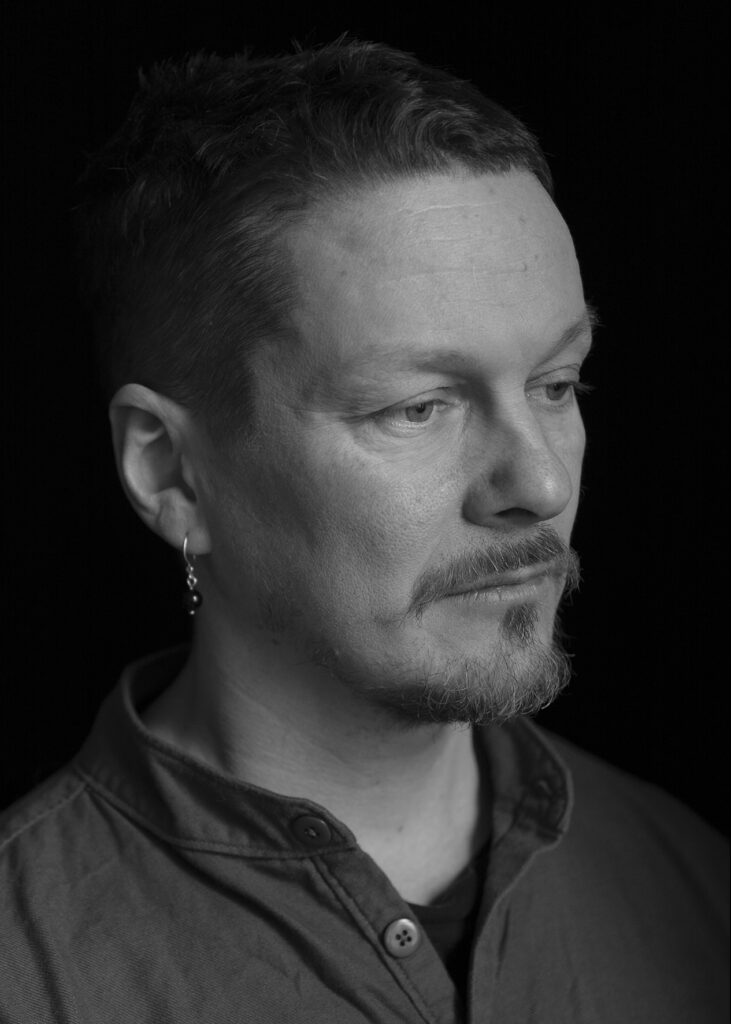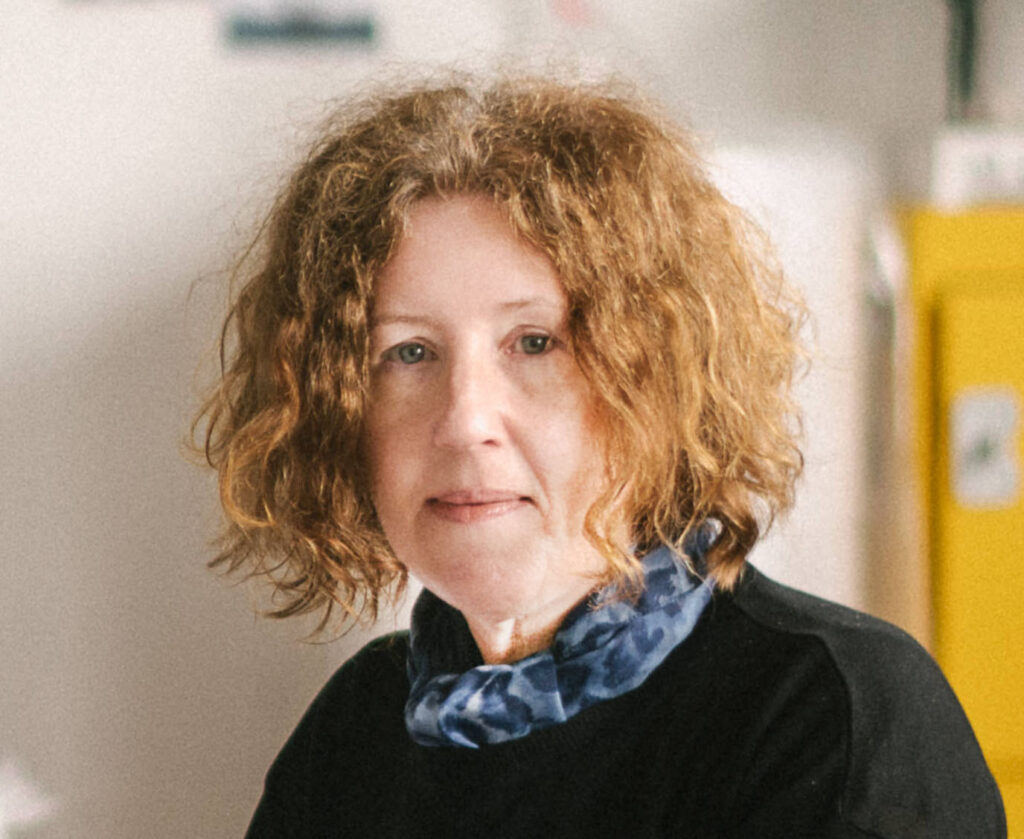Four artists have been selected to take part in the Art of Remembrance residency programme. Hosted at four WWII remembrance sites across Europe, each artist will create a new site-specific work inspired by the local history, memory culture, and community. Their residencies take place between spring 2025 and early 2026 and will culminate in a travelling exhibition. Learn more about each artist below.

Residency Site: Nuto Revelli Foundation, Paraloup, Italy
Rebekka Bauer is a German visual artist whose work spans photography, installation, text, performance, and artist publications. She lives and works in Leipzig, where she is an active member of the Kunstverein Leipzig curatorial collective. Her practice is rooted in an exploration of memory culture, with a strong focus on personal and intergenerational history. Often working with archival materials, found objects, and autobiographical references, Bauer examines how intimate experiences intersect with broader historical forces—especially those related to the legacy of the Second World War.
Bauer studied stage design and fine art in Salzburg, Vienna, and Leipzig, and her works have been presented in numerous exhibitions and festivals in Germany, Austria, and other parts of Europe. She has also published multiple artist books and contributions in collaborative publications. Her projects often delve into the affective textures of family memory, with attention to gender, care, and the domestic sphere, translating complex emotional narratives into tactile and spatial forms.
Words from the Jury
Rebekka Bauer’s proposal offers an intimate and original lens on memory and WWII history, focusing on underrepresented perspectives—particularly those of women, family structures, and emotional labor. Her work moves beyond traditional remembrance to engage with memory culture itself, shifting from heroic narratives to micro-histories that resonate across generations.
The jury was particularly drawn to the transgenerational depth of her approach, the thoughtful material language of her installations and books, and her ability to interweave private histories with broader cultural questions. Her high level of sensitivity, especially in dealing with complex archives and emotional narratives, makes her especially well suited to engage with local communities.
Her proposed project at Paraloup demonstrates both critical insight and poetic nuance—qualities that align beautifully with the ethos of Art of Remembrance.

Residency Site: Bastogne War Museum, Belgium
Raphaël Dallaporta is a French artist and photographer known for his conceptually rigorous and research-driven approach to contemporary visual art. His work often intersects with disciplines such as archaeology, history, law, and science, and is shaped by collaborations with experts in those fields. Through photography, film, and installation, Dallaporta explores the systems and structures—both visible and hidden—that define how we relate to knowledge, memory, and space.
He studied at the Gobelins School of Image in Paris and later at Fabrica in Italy, and was a resident of the Villa Medici (Académie de France à Rome). Dallaporta’s work has been exhibited at major institutions including the Centre Pompidou, Foam Amsterdam, the Musée de l’Élysée in Lausanne, and the Bibliothèque nationale de France. His projects range from large-scale immersive films to intimate photographic investigations, and his publications have received significant critical acclaim. Across all media, his work challenges viewers to consider how history is recorded, mediated, and preserved.
Words from the Jury
Raphaël Dallaporta’s proposal brings a thoughtful and poetic engagement with the landscape of war memory. His project explores the enduring presence of trees as silent witnesses to conflict, forging a subtle dialogue between technology and nature. By drawing on historical research and contemporary tools such as LiDAR and drone scanning, he seeks to visualize the invisible traces left by the Battle of the Bulge, revealing how human intervention becomes embedded in the environment over time.
The jury appreciated the clarity of the project’s structure and its strong visual and conceptual coherence. His focus on informal memory practices—ritual gestures, symbolic sites, and natural markers—adds a rich, human layer to his exploration. His themes of regeneration, legacy, and the layering of time are articulated with precision, linking the physicality of place with broader reflections on memory and collective history.
With a refined artistic language and a sensitivity to both context and symbolism, his contribution resonates deeply with the aims of the Art of Remembrance project.

Residency Site: Sybir Memorial Museum, Poland
Juhana Moisander is a Finnish artist whose practice centers on immersive video installations that integrate sound, performance, and scenographic design. His work investigates the psychological dimensions of collective memory, cultural myths, and social rituals, often drawing on references from art history, religion, and folklore. Moisander creates carefully composed, atmospheric environments where viewers are invited to reflect on the emotional and symbolic undercurrents of shared human experience.
He holds degrees in fine arts and media studies from institutions in Finland and has exhibited extensively in Finnish museums and international venues. His works have been featured in solo exhibitions at EMMA – Espoo Museum of Modern Art, Mikkeli Art Museum, Gallery Hippolyte, and others, and are held in several public collections. Moisander’s approach blends choreographed movement and audiovisual elements into multi-layered compositions that explore the tensions between past and present, power and vulnerability, individual and group.
Words from the Jury
Juhana Moisander’s proposal stood out for its clarity, visual strength, and conceptual maturity. His project presents a powerful fusion of historical reflection and contemporary resonance, shaped through a refined audiovisual language. The jury appreciated the clear structure of his approach—each element of the proposed installation carries a distinct message, balancing poetic abstraction with historical depth.
Moisander’s ability to combine immersive video, sound, and sculptural objects results in deeply atmospheric environments that transcend traditional narrative forms. Drawing on personal family history and a shared wartime experience between Finland and Poland, his project for the Sybir Museum builds a compelling bridge between past trauma and present-day concerns, particularly the rising polarization within society.
His sophisticated use of space, strong production quality, and thoughtful engagement with both archival material and community involvement make him an excellent addition to the Art of Remembrance program.

Residency Site: La Coupole, France
Gail Ritchie is a Northern Irish visual artist based in Belfast. Her practice explores the emotional impact of conflict, memory, and loss through a combination of drawing, sculpture, installation, and research. With academic training in both political science and fine art, Ritchie brings a multidisciplinary perspective to her work, investigating how histories are internalized and remembered across time. Her approach is deeply reflective and often engages with archival materials, personal narratives, and spatial environments that hold symbolic or emotional weight.
Ritchie’s work has been exhibited widely across the United Kingdom, Ireland, and internationally, including in exhibitions and projects focusing on remembrance, military experience, and the Troubles. She has undertaken residencies and research collaborations with academic institutions, veterans’ groups, and public bodies, and her work is included in several public and private collections. Her long-standing interest in the ways memory is shaped by place and material culture continues to inform her evolving body of work. Her work is held in collections such as the National Museums of Northern Ireland and the Arts Council of Northern Ireland.
Words from the Jury
Gail Ritchie’s application stood out for its depth, clarity, and emotional intelligence. Her proposal demonstrated strong conceptual grounding, drawing on a rich artistic and theoretical genealogy to explore the lasting impact of war. The jury was particularly interested in her ability to connect personal and societal memory, and in her sensitive engagement with historical archives and site-specific narratives.
She approaches the subject of WWII not with didacticism, but with a poetic restraint that allows space for reflection and ambiguity. Her interest in the architecture and atmosphere of the chosen site, as well as the tension between technological pasts and present-day risks, adds a compelling layer to her artistic inquiry. The diversity in scale and the openness of her envisioned outcome speak to her experience and adaptability—qualities essential for a traveling exhibition.
Her sensitivity, combined with a strong record of residencies and exhibitions, makes her a thoughtful and resonant voice within the Art of Remembrance project.
© 2025 | Art of Remembrance. All rights reserved.